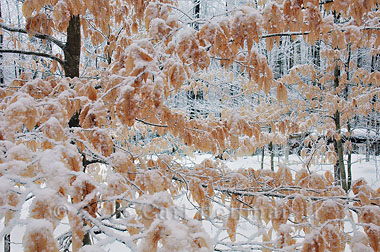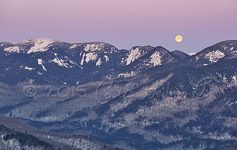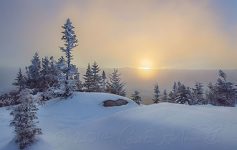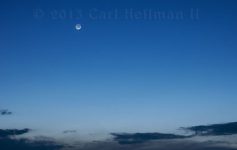This year’s mix of freeze and thaw cycles created a lot of options for photographing icicles and fresh snow in a lot of different situations around the Adirondacks. During the below zero cold, rivers and streams freeze over completely, then open again in the thaw. Icicles build on rocks and cliffs, and then gently drip away, or fall to a heap in the warm air and sun.
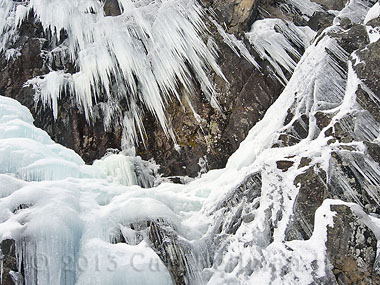
The thaw cycles create more water for the next set of icicles as the water seeps under the snow cover on the ground to the overhangs and outcroppings. As the ice builds up in the cold temperatures, fresh snow decorates the details and creates many different options for photography.
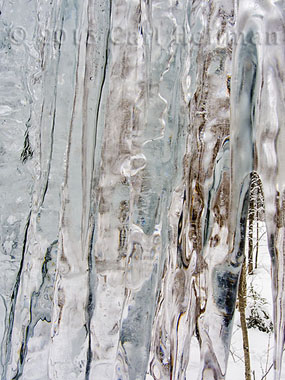 When photographing snow and ice it’s important to consider how the camera is reading the light values for each exposure, especially when a photo is composed mostly of these brighter details. The camera’s light meter wants to balance the tonal values of a photo to a mid-tone 18% gray value. That’s just right for green grass and leaves and deep blue sky. Subjects like fog, snow, and ice though are brighter than 18% gray, and the camera needs to be adjusted so the brighter snow and ice will appear closer to a white value.
When photographing snow and ice it’s important to consider how the camera is reading the light values for each exposure, especially when a photo is composed mostly of these brighter details. The camera’s light meter wants to balance the tonal values of a photo to a mid-tone 18% gray value. That’s just right for green grass and leaves and deep blue sky. Subjects like fog, snow, and ice though are brighter than 18% gray, and the camera needs to be adjusted so the brighter snow and ice will appear closer to a white value.
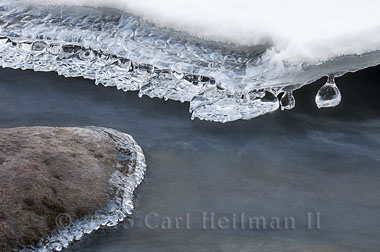 The easiest way to make the adjustment is to use a camera’s exposure compensation feature while working in Aperture or Shutter Priority, or Program modes. A snow scene should be overexposed by about 1 to 2 stops depending on the proportion of light snow to darker details in the image. The bottom line is, if you take an image and the overall details are too dark – add more overexposure. If image details are too light, dial in some underexposure.
The easiest way to make the adjustment is to use a camera’s exposure compensation feature while working in Aperture or Shutter Priority, or Program modes. A snow scene should be overexposed by about 1 to 2 stops depending on the proportion of light snow to darker details in the image. The bottom line is, if you take an image and the overall details are too dark – add more overexposure. If image details are too light, dial in some underexposure.
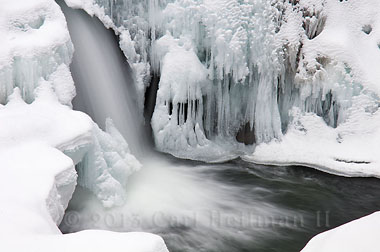 This shooting process and more tips and techniques for exposure and working with histograms are explained in greater detail in my books – ‘Contemporary Landscape Photography’ (Amphoto), and ‘The Landscape Photography Field Guide’ (Focal Press). We also go through these shooting techniques and many others in my photography workshops. Happy shooting!
This shooting process and more tips and techniques for exposure and working with histograms are explained in greater detail in my books – ‘Contemporary Landscape Photography’ (Amphoto), and ‘The Landscape Photography Field Guide’ (Focal Press). We also go through these shooting techniques and many others in my photography workshops. Happy shooting!
